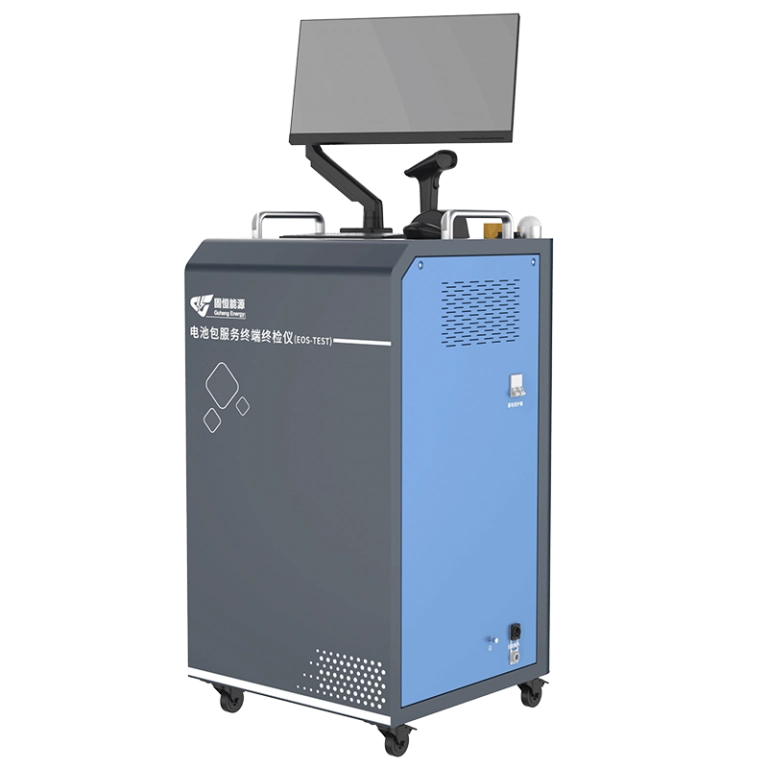As the global energy transition accelerates, new energy vehicles have become the new favorite of the automotive industry. The core component, the battery system, determines the vehicle’s endurance, performance and safety. Battery cells, modules and battery packs are the three pillars of this system. How do they work together? This article will explore the structure, function and relationship of these components in depth, and take you to understand the mystery of new energy vehicle batteries.
New Energy Vehicle Battery Overview
The battery system of a new energy vehicle is its “heart”, providing energy for electric drive. Compared with traditional fuel vehicles, new energy vehicles rely on electricity to store and release electrical energy. This makes the design and performance of the battery crucial. The battery system consists of multiple layers: from the smallest battery cell, to the middle-level battery module, and then to the final battery pack. Each layer has specific responsibilities.
- Battery Cell: The smallest unit of energy storage.
- Battery Module: It is composed of multiple units and provides modular management.
- Battery Pack: A collection of modules, integrated into the vehicle.
New energy vehicle battery technology is constantly improving, and the driving range has increased from 100 kilometers in the early days to more than 500 kilometers today. This progress is inseparable from the optimized design of battery cells, modules and battery packs.
The structure and function of the battery cell
The battery cell is the basis of the battery system, similar to a single “cell”. It is usually composed of a positive electrode, a negative electrode, an electrolyte and a separator. At present, the types of batteries commonly used in new energy vehicles include lithium-ion batteries, lithium iron phosphate batteries and ternary lithium batteries.
Key characteristics of battery cells
- capacity: Determines the amount of stored electricity, usually measured in ampere-hours (Ah).
- Voltage: The voltage range of lithium iron battery is between 2.5V and 3.65V. The voltage range of ternary lithium battery is between 3.0V and 4.2V.
- life: The number of charge and discharge cycles can reach more than 3000 times.
Function and effect
The battery cell is responsible for storing and releasing electrical energy. Its performance directly affects the battery life and charging speed. For example, ternary lithium batteries are widely used in high-end models due to their high energy density, while lithium iron phosphate batteries are known for their safety and cost advantages.
Design and application of battery modules
The battery module is the middle layer that combines multiple battery cells. By connecting in series or in parallel, the module increases the voltage or capacity to meet the needs of the vehicle. The modular design not only improves efficiency, but also facilitates maintenance and replacement.
The structure of the module
- Unit Arrangement: The unit is fixed by welding or connectors.
- Cooling system: Such as liquid cooling or air cooling to prevent overheating.
- Protective case: Enhanced durability and safety.
Application Scenario
The module design makes the battery system more flexible. For example, a module may contain 10-20 units and output 12V-48V voltage. This design is widely used in electric cars, buses, etc.Portable air tightness leak tester QMM-AK2-1It can be used to detect the sealing of battery packs and ensure their reliability under extreme conditions.

Battery Pack Integration and Management
The battery pack is the highest level of the battery system, which is integrated with multiple modules. It is not only the energy core, but also includes a management system (BMS) responsible for monitoring and optimizing battery performance.
Key components of a battery pack
- Battery module integration:Arranged according to vehicle model requirements.
- Battery Management System (BMS): Monitor voltage, temperature and power.
- shell: Waterproof and dustproof, protecting the internal structure.
Management and Optimization
The battery pack uses the BMS to achieve balanced charging, overcharge protection and thermal management. For example, the BMS can prevent a module from overheating and ensure the safe operation of the entire system.Battery Pack Service Terminal Final Tester EOS-TESTIt is a dedicated device for full-function off-line testing of battery packs after sales, helping manufacturers improve quality.

The relationship between battery pack and vehicle
The capacity and power of the battery pack directly determine the range and acceleration performance. For example, an 80kWh battery pack can support a range of 400-500 kilometers.
Guheng Energy: Your New Energy Service Technology Solution Expert
In the field of new energy vehicle batteries, technical support is crucial.Solid EnergyAs an industry pioneer, we provide comprehensive solutions. Guheng Energy focuses on the research and development of new energy technologies and services, with customers all over the world. From a start-up to today’s industry leader, Guheng Energy continues to innovate and has launched a variety of testing equipment and solutions.
Highlights of Guheng Energy’s technical support
- Professional equipment: Such as battery pack final inspection instrument and air tightness tester to improve production efficiency.
- Customization:Provide battery testing and optimization solutions for different models.
- Technology Accumulation: Years of experience ensure product quality and reliability.
Whether it is the sealing test of the battery pack or the performance verification of the battery pack, Guheng Energy provides you with reliable support.
Summary and Outlook
The battery system of new energy vehicles is a sophisticated ecosystem, from battery cells to battery modules and then to battery packs, each layer is indispensable. The battery cells provide basic energy, the modules enable flexible combination, and the battery pack integrates all of this into the power source of the vehicle. In the future, with the advancement of material science and intelligent management, the battery system will be more efficient and safer, and the driving range is expected to exceed 1,000 kilometers.
Technical support from companies such as Guheng Energy will promote this process. Whether you are a manufacturer or a consumer, understanding these relationships will help you choose a better battery solution and welcome the arrival of the new energy era.
FAQ
1.What is the difference between a battery cell and a battery module?
A battery cell is a single electrochemical unit that stores electrical energy and usually has a small capacity. A battery module is composed of multiple cells that are connected in series or parallel to increase voltage or capacity, and add cooling and protection structures. Simply put, the battery cell is the “part” and the module is the “component”. For example, a module may contain 10 cells and output a higher 12V voltage, which is suitable for practical applications.
2.What is the function of the BMS of the battery pack?
The battery management system (BMS) is the “brain” of the battery pack. It monitors voltage, current and temperature in real time to ensure that each module operates evenly. It can also prevent overcharging, over-discharging and overheating. For example, when the temperature of a module is too high, the BMS will adjust the charging rate or start the cooling system. In addition, the BMS can predict battery life and provide maintenance recommendations, greatly improving safety and efficiency.
3. How long is the life of new energy vehicle batteries?
The life of new energy vehicle batteries is usually measured in cycles. Lithium-ion batteries can support 1,000-2,000 full charge and discharge cycles, equivalent to an 8-10 year service life. The specific life is affected by usage habits, charging frequency, and ambient temperature. For example, daily fast charging or use in high temperature environments will accelerate degradation. Maintaining moderate charging (20%-80%) and avoiding extreme temperatures can extend life.





